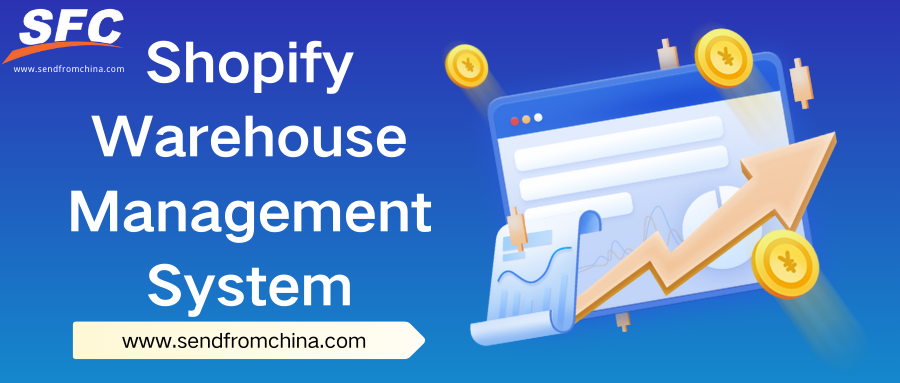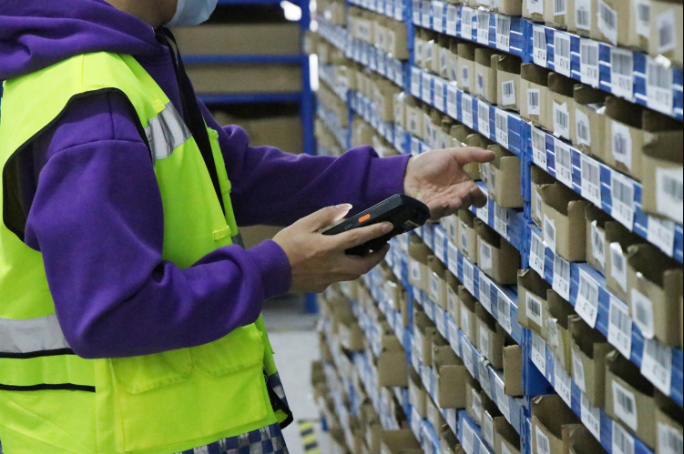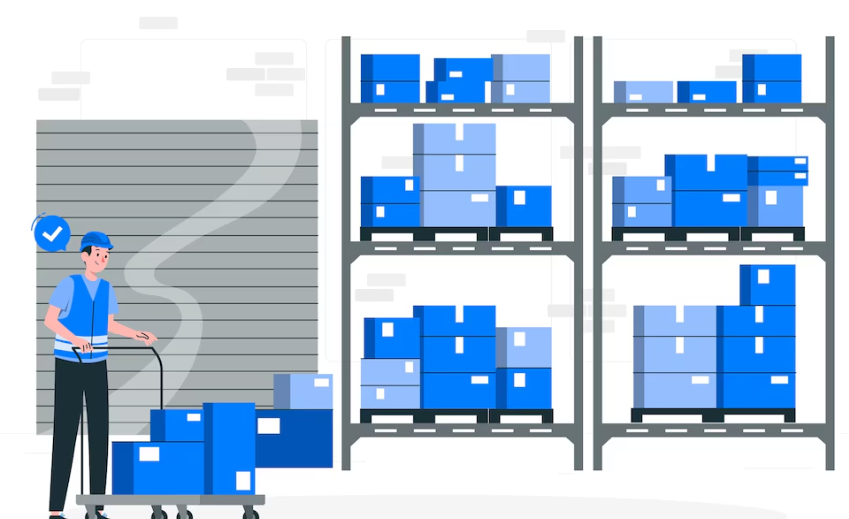Table of Contents
Shopify Warehouse Management System: The Complete Guide
Time: Aug 14,2025 Author: SFC Source: ppcm.com.cn
Regarding e-commerce, delays and mismanaged inventory aren’t mere inconveniences—they’re missed revenue. As Shopify continues to power millions of businesses worldwide, sellers need more than just a storefront—they need operational mastery. A Warehouse Management System (WMS) acts as the “control center” of your logistics, tracking stock from shelf to shipment in real time.More than a warehouse tool, a WMS is now vital for Shopify businesses seeking growth, reliability, and scalability. It drives order accuracy, inventory visibility, and fulfillment efficiency, while helping you avoid costly errors and costly delays. In fact, companies that deploy modern WMS platforms report up to a 25% boost in productivity, 20% better space utilization, and 30% improved inventory efficiency.
In this guide, you’ll uncover:
- What a WMS really is, and why Shopify sellers can’t afford to skimp
- Key features to look for in a WMS tailored for Shopify
- How these systems actually work, bridging the gap between your orders and your warehouse
- And why SendFromChina (SFC) stands out as your seamless, China-based one-stop WMS and 3PL partner
Ready to transform your back-end chaos into fulfillment calm? Dive in.

1. What Is a Warehouse Management System
Imagine a bustling warehouse, labels flying, packages stacking up, and every item—no matter how small—requires tracking, coordination, and foresight. That’s where a Warehouse Management System comes in. A WMS is software built to monitor, organize, and optimize warehouse operations—from the moment goods arrive to the instant they ship out. More than mere record-keeping, it maps where every product lives, what’s selling fast, and when restocking becomes urgent. It coordinates receiving, picking, packing, shipping, returns—an ecosystem, really, engineered to drive efficiency.At its simplest, a basic WMS provides inventory control and location tracking. Most modern systems in use go further—analyzing capacity, labor, throughput, even suggesting smarter workflows. At the highest level, some WMS platforms blend into transport control, real-time automation, and predictive analytics—bringing them near to what industry calls a Warehouse Execution System (WES).
Put plainly: WMS is the brain behind your warehouse, keeping chaos at bay and operations running like clockwork.
2. Why WMS Matters for Shopify Sellers
Managing a Shopify store without a Warehouse Management System is like trying to run a marathon in flip-flops—possible, but painfully inefficient. In today’s e-commerce world—where customers expect lightning-fast delivery, zero errors, and transparency—a WMS transforms your logistics from reactive to proactive, enabling smoother scaling, happier customers, and better margins.
Real-Time Inventory Visibility: The Foundation of Trust
One of the most immediate impacts of a WMS is real-time inventory visibility. When every movement—whether a sale, return, restock—is tracked and reflected instantly, it eliminates the dreaded “sold-out after checkout” scenario. WMS ensures accuracy across Shopify and other channels, preventing overselling and customer frustration.Streamlined Order Fulfillment: From Chaos to Cohesion
When Shopify and your warehouse can talk to one another in real time, orders flow seamlessly—no manual re-entry, no lag, no mispicks. Order details sync into the WMS, pick-lists are auto-generated, routes get optimized, and order fulfillment becomes fast and reliable.The automation not only speeds up the entire fulfillment process but also slashes errors—leading to fewer returns, better customer satisfaction, and less time spent resolving mistakes.
Increased Accuracy & Reduced Shrinkage
Warehouse shrinkage—when physical inventory doesn’t match your records—can be costly. According to Shopify’s enterprise insights, shrinkage costs U.S. retailers $94.5 billion annually. By scanning barcodes throughout receiving, picking, and packing stages, a WMS keeps you aligned with reality and protects both profits and reputation.Cost Savings & Efficiency Gains
Automating manual processes—like recounting inventory, manually allocating orders, or chasing down stock discrepancies—translates directly to lower labor expenses. Shopify data shows that WMS automation frees staff to shift from reactive picking and packing to more value-added tasks.Additionally, WMS-empowered inventory control reduces overstock and stockouts—Shopify's guide notes that even a 10% reduction in inventory errors can yield significant savings.
Data-Driven Decisions & Forecasting
A WMS doesn’t just crunch numbers—it surfaces them in meaningful dashboards. You gain insights on key metrics like stock-out risk, high-velocity SKUs, fulfillment timing, and geographic shipping trends.It means smarter purchasing, accurate replenishing, and strategic warehouse expansions—especially important if you're operating multiple warehouses, whether regional or global.
Scalability & Multi-Channel Sync
For Shopify sellers eyeing growth—or already selling on Amazon, eBay, or offline—the ability to manage multiple sales channels from one dashboard is a game-changer. WMS keeps inventory and orders synchronized across the board, alleviating chaos as you expand.ShipBob underscores this, noting that WMS supports multi-location operations with cross-warehouse visibility—letting you position inventory smarter (e.g. close to customers) to save time and cut costs.
Improved Customer Satisfaction
At the end of the day, a smoother operation equals a happier customer. WMS enables real-time order tracking, faster shipping, and accurate fulfillment—each delivering trust and building loyalty.Seeing accurate delivery estimates and reliable stock counts builds confidence—from checkout to delivery. That’s what keeps customers coming back and talking positively about your brand.
3. What Makes a Good Warehouse Management System for Shopify
Choosing the right WMS for your Shopify store isn’t just about picking software—it’s about selecting a strategic partner that empowers growth, precision, and smarter fulfillment. Let’s break down the essential features that truly elevate a WMS tailored for Shopify sellers.
Seamless Integration with Shopify & Other Platforms
At its core, a WMS must fit snugly into your Shopify ecosystem. That means real-time synchronization of:- Product listings, inventory counts, orders, tracking, and returns with Shopify—updated automatically and bidirectionally.
- Integration with other systems like ERPs, CRMs, shipping carriers, and sales channels like Amazon or eBay—centralizing operations and sharply reducing workflow friction.
A system that falters in sync or relies on manual uploads undermines reliability and ultimately hurts customer trust.
Real-Time Inventory Control & Visibility
Inventory control is more than a checkbox—it’s the heartbeat of fulfillment accuracy. A robust WMS enables:- Live visibility into stock across locations, preventing overselling or unexpected stockouts.
- Tracking by batch, lot, or FIFO (First In, First Out) workflows—key for industries requiring expiration or freshness tracking.
This level of visibility is vital for scaling with confidence and ensuring your customers always see the right stock status.
Intelligent Order Fulfillment & Picking
Speed and accuracy go hand in hand. A strong Shopify WMS delivers:- Advanced picking workflows: batch, wave, zone, or even 3D pick-path optimization—for staff to pick with minimal steps and maximum precision.
- Barcode or RFID support: reducing human error with scan-based confirmations during picking and packing.
- Automation of pick lists, label printing, packing slips, and order consolidation—for smooth and consistent fulfillment across orders.
These features ensure order fulfillment isn’t a chore—but a streamlined, accurate operation.
Multi-Carrier & Shipping Features
Shipping shouldn’t be an afterthought—it’s part of your brand promise. A refined WMS supports:- Built-in rate comparisons across carriers and optimized label generation—helping you choose the best combination of cost and speed.
- Real-time order status updates and tracking pushed back into Shopify—keeping customers informed and reducing inquiries.
Fast, cost-conscious, and transparent shipping isn't optional—it’s expected.
Multi-Location & Global Operations
Growth means complexity—but your WMS should make it feel simple. Key capabilities include:- Synchronizing across multiple warehouses, fulfillment centers, or even international locations—all viewable in one platform.
- Smart routing: fulfilling orders from the most optimal location in terms of cost, speed, or inventory availability.
- Support for cross-border needs: currencies, units, tax configurations, documentation, regulatory compliance.
With these features, you can expand without chaos and delight customers globally.
Returns & Reverse Logistics
Returns are inevitable—but they can also be part of a positive experience. Your WMS should:- Auto-generate return labels, process returns into workflows, and update stock levels—all seamlessly synced to Shopify.
- Provide insights into return reasons, condition of items, and how that affects restocking or refunds.
When returns are handled well, they can become a trust-building part of your brand’s promise.
Reporting, Analytics & Demand Forecasting
Data gives you foresight. A top-tier WMS delivers:- Dashboards tracking key KPIs—like order processing rates, inventory turnover, picking efficiency, and stock accuracy.
- Demand-based reorder alerts and forecasting tools—help predicting restocks before stockouts hit.
- Custom reports and integrations with your accounting or ERP systems—for deeper data-driven decisions.
Insight today protects profits and preps you for growth tomorrow.
Scalability, Customization & Ease of Use
Your WMS should adapt as fast as your business grows, not hold you back. Look for:- Cloud-based, scalable infrastructure that handles seasonal spikes or expanding SKUs without lag.
- Customizable workflows, role-based access, and adaptable processes to match how your teams actually work.
- Intuitive UI that minimizes training time—so your staff can get operational quickly and accurately.
A WMS shouldn’t slow you down—it needs to feel like a natural extension of your team.
4. How Does WMS Work?
Think of a Warehouse Management System as the silent conductor behind the scenes, orchestrating every movement in your warehouse—from stock arrival to shipping, and beyond. Here's how it unfolds:
Receiving & Put-Away
When goods arrive, the WMS logs them—capturing SKUs, quantities, lot numbers, and serials via barcodes, RFID, or manual input. It then plots the most efficient placement, factoring in product size, turnover rates, and picking convenience.Before WMS tools, warehouses often relied on pen, paper, or spreadsheets—now as outdated as dial-up internet. A modern WMS dramatically cuts placement time and error risk.
Inventory Tracking & Real-Time Visibility
From the moment stock enters the warehouse to the instant it's sold, a WMS delivers real-time visibility—powered by technologies like barcodes, RFID, and IoT sensors. You see live inventory across bins, zones, and entire facilities, preventing overselling and misstock scenarios.The granular insight fuels smarter restocking, more accurate forecasts, and just-in-time inventory—critical for lean and agile operations.
Intelligent Order Processing & Picking Workflows
As orders roll in, the WMS triggers several smart workflows:- Picking list generation: It creates optimized picklists, possibly grouping orders into “waves” to balance workload over time.
- Task assignment: Operators are guided by scanners or terminal prompts—determining what to pick, where to go, and when—all aimed at reducing travel time and mistakes.
- Accuracy aids: Barcode or RFID scanning confirms each item, ensuring what's picked truly matches the order.
Packing, Labeling & Shipping
After picking:- The WMS can automatically print labels, invoices, and packing slips based on order details.
- It deducts stock, updates status, and forwards shipment info back to your e-commerce platform—like Shopify—instantly pushing tracking details to customers.
The seamless flow eliminates manual steps, slashes errors, and offers transparent customer communication.
Returns & Reverse Logistics
When customers return items, a robust WMS:- Handles incoming returns—checking condition, updating stock, and processing refunds or restocks.
- Captures return reasons and identifies trends for adjustments to packaging, product quality, or fulfillment workflows.
Automating returns helps maintain inventory accuracy while enhancing customer experience.
Advanced Coordination with WCS/WES
In highly automated facilities, Warehouse Control Systems (WCS) and Warehouse Execution Systems (WES) take center stage:- A WCS operates like a real-time traffic controller—guiding conveyors, sorters, and robotics to route items efficiently.
- A WES layers even more intelligence—managing labor, automation, and operations dynamically based on real-time workflows, predictive analytics, and KPI alerts.
Sometimes, advanced WMS systems blend seamlessly with WCS/WES functionalities, creating a unified, intelligent backbone for warehouse operations.
Reporting, Analytics & Continuous Improvement
Beyond day-to-day workflows, WMS platforms serve up dashboards and analytics to measure:- KPIs like order accuracy, throughput, labor productivity, and storage utilization.
- Strategic insights for demand forecasting, capacity planning, and labor scheduling.
- Alerts for anomalies—like stockouts or slow-moving SKUs—so you can act fast.
This data empowers smarter decisions, operational tweaks, and scalable growth.
5. SFC: An Easy-to-Go WMS for Shopify Sellers
Let’s bring in SendFromChina (SFC)—your hardware-light, logistics-strong, Shopify-friendly 3PL and WMS partner based in Shenzhen, operational since 2009.What SFC Offers
- Tech-powered 3PL in China with full warehousing, picking, packing, shipping, QC, kitting, and more.- Real-time inventory visibility in their China warehouses, accessible anytime via their system.
- Automated Shopify integration, where orders are downloaded, fulfilled, and tracking numbers are pushed back instantly.
- Value-added services like labeling, assembly, photography, branded packaging, marketing inserts—tailored for cross-border merchants.
- Fast fulfillment, often within 24 hours from receipt to dispatch.
How to Get Started with SFC
- Login to your SFC dashboard, and go to Marketplace → Application Authorize.- Click Connect under the Shopify icon—fill in your store name and you’ll be redirected to Shopify to install their app.
- After installation, enable the Shopify connection inside SFC’s Marketplace settings. Your orders will then flow in automatically.
- Sit back as they pick, pack, ship, and update fulfillment—and you're only charged for storage (60 days free) and shipping.
Some users say fulfillment generally happens within a day or two, with minimal handling mistakes. Though app reviews are limited—and mostly mixed—SFC offers distinct advantages: speed, warehouse control, real-time sync, and one provider for China sourcing and fulfillment.
6. Conclusion
Choosing the right WMS is more than an IT decision—it’s a strategic move. For Shopify sellers, integrating a smart WMS means smoother operations, fewer mistakes, and happier customers. The best systems offer real-time inventory, automated workflows, insightful reporting, and room to scale.SendFromChina (SFC) stands out as a powerful, easy-go solution—wrapping warehousing, fulfillment, integration, and value-added services into one seamless offering. With SFC, you gain a logistics partner who makes back-offices frictionless and fulfillment fast.
7. FAQs
Q1: Does SFC’s app cost money to install?
A1: No. It’s free to install. You pay only for storage ($1.49/CBM/day) and shipping.Q2: How fast does SFC fulfill Shopify orders?
A2: Usually within 24 hours, sometimes up to 2 days, with very few handling mistakes.Q3: What services beyond fulfillment does SFC provide?
A3: Quality control, labeling, kitting, customized packaging, photography, marketing inserts, and more.Q4: How does SFC connect with Shopify?
A4: Via their app—authorize it in SFC's dashboard (Marketplace → Authorize), connect your store, install the app, then activate the account to start automatic syncing.Q5: Will tracking numbers show up in my Shopify orders?
A5: Yes—tracking updates automatically to Shopify when orders are marked fulfilled. Post Views:999
Post Views:999
Copyright statement: The copyright of this article belongs to the original author. Please indicate the source for reprinting.
Previous Post
How to Fulfill Your eCommerce Orders: Guide to Self-Fulfillment
Next Post
What Is Seller Fulfilled Prime? A Comprehensive Guide with Pros, Cons & Comparison
TAGS
Hot Research
Get a Custom China Fulfillment Solution with FREE Storage for 30 Days
 Want to know about our services, fees or receive a custom quote?
Want to know about our services, fees or receive a custom quote?
 Please fill out the form on the right and we will get back to you within a business day.
Please fill out the form on the right and we will get back to you within a business day.
 The more information you provide, the better our initial response
will be.
The more information you provide, the better our initial response
will be.





 TAGS:
TAGS: